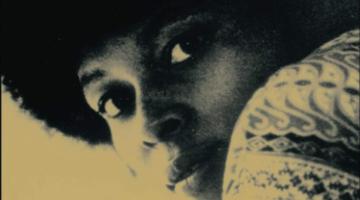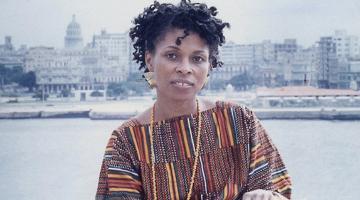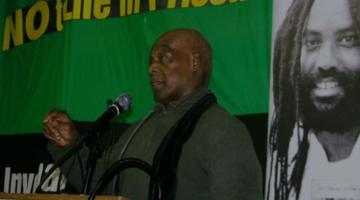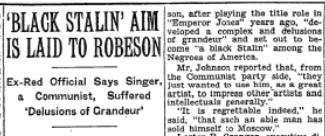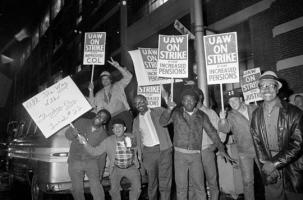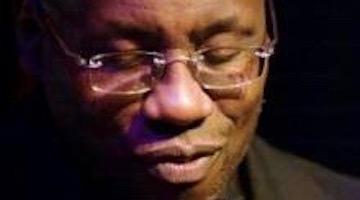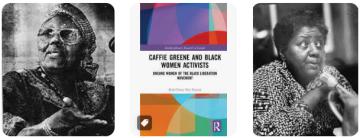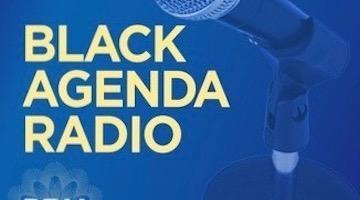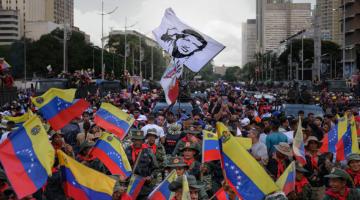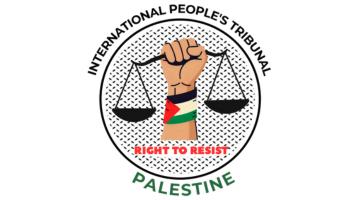In this series, we ask acclaimed authors to answer five questions about their book. This week’s featured author is Damien M. Sojoyner. Sojoyner is Associate Professor of Anthropology at the University of California, Irvine. His book is Joy and Pain: A Story of Black Life and Liberation in Five Albums.
Roberto Sirvent: How can your book help BAR readers understand the current political and social climate?
Damien Sojoyner: Throughout the process of researching and writing Joy and Pain, it was stated to me repeatedly that the carceral state and prison industrial complex were not a set of things (such as the physical prison), but operated in a relational manner. That is, if you look at the carceral state as a singular entity that can be toppled or dealt with one or two actions, then you will miss the bigger picture and more likely than not, you will reproduce harm and violence. As a set of relationships, the framework changes and you get a sense of: a) how state structures through shared carceral governance schemes are in articulation with one another; b) how community relationships are situated by carceral relationships and importantly; c) how people intervene and fight against the carceral apparatus based upon their understanding of said relations. Within this current political and social climate, I think now more than ever, it is important to keep such a framework in mind as we engage in our scholarship, organizing efforts and strategy building.
There is so much energy and possibility for building within this current moment and given the overwhelming enthusiasm, we need to have clear and precise frameworks. Importantly, these frameworks (such as those that center the carceral state as a set of relationships) are more likely than not already developed and being worked out in the very communities that often we think need guidance and ironically, governing frameworks. One of the primary goals of the book is to center key theoretical interventions as emanating from the social and political visions of Black communities in Los Angeles. Learned from a model that has long informed radical Black thought, many of the strategies that we need are in our midst and ready to organize us into collective action.
What do you hope activists and community organizers will take away from reading your book?
I very much appreciate the spirit of the question and would like to frame my response in the spirit of shared knowledge. That is, rather than a takeaway in the traditional sense, the following are “lessons learned” that were imparted to me and were critical to the framing of the book.
My very straightforward response is: the importance of Black study, political education, and Black communal institutions. Los Angeles in many respects is a city where the future of US social and political relationships is violently forged. As an example, much of the arduous labor that was central to the resistance to the prison industrial complex during the late 1970’s and 80’s was done through an activist political orientation invested in a very specific type of multi-racial solidarity. Much of the basis of that solidarity was built upon a foundation that understood Blackness as central to understanding the motivations and intent of massive state projects such as the build up of the prison industrial complex. This resulted in a set of political commitments indebted to study, learning and movement building which configured Blackness as the critical node to develop strategy and actions. It was in no way utopic nor without tension and conflict, yet it was highly effective. The city’s response was to unleash a multifaceted program that sought to make Blackness unrecognizable and illegible outside of state intervention and also the complete erasure of Black communal spaces through development and carceral schemes.
The result has been a state informed bastardization of the earlier multi racial coalition and the development of a multi racial formation that is based upon the denigration of Blackness and in particular, Black study, political education and Black communal institutions. My hope is that through Black study, political education and the centering of Black communal institutions, activists and community organizers can both continue the long fight against carceral violence and the prison industrial complex while taking into account the state’s reactionary response in Los Angeles as a model as development and carceral schemes respond to the demographic reshaping taking place in US cities.
We know readers will learn a lot from your book, but what do you hope readers will un-learn? In other words, is there a particular ideology you’re hoping to dismantle?
There are two primary takeaways that I hope ring true throughout the book. The first is that Black people are not passive actors in liberatory struggles. Much of the dominant theoretical frameworks with regards to the state and state violence situate the state as an omniscient force that is proactive and forward thinking. Black communal experiences and knowledge traditions counter this very pernicious narrative with regards to the state. With respect to the development of the prison industrial complex, its development has been highly reactive and in direct action against Black liberatory visions. Within such a framework Black people are far from passive and in direct opposition are central to the undoing to the multiple forms of violence levied against them.
The second takeaway with regards to the process of unlearning is to gain an understanding of the carceral state as a set of social arrangements that has crept into all ways of being. While often associated with police violence, the forms of violence that emanate from the carceral state are most adversely felt in the lack of health care, food and material resources that provide the basis of safety. Anecdotally, as expressed to me by my friend and colleague Marley, who is also a main interlocutor in the book, the likelihood of Black people being killed at the hands of the police is rather minimal; however the likelihood of Black people dying prematurely because of the material, political and ideological resource infrastructure is informed by the logic of carcerality (and thus the need and constant presence of policing is extremely high). It is incumbent upon us to study and tease out these points of departure and conversion to strategically apply pressure points upon the state.
Which intellectuals and/or intellectual movements most inspire your work?
There are two interrelated movements that have had a great impact on my thinking and work. The first is the Black Arts Movement, specifically the collective movement that emanated out of Los Angeles during the 1960’s and 70’s. The wide range of artistic expression and vocalization of communal visions of what is possible is breathtaking in scope. That movement also laid the groundwork for what was to be the cultural hub of Black experimentation for decades to come. Developing a reputation for pushing the boundaries of tonality, phrasing and aesthetic sensibilities, the influence of that time period would shape the political and emotional contours of artistic expression and movement building throughout the region.
Second, and in the genealogical tradition of the Black Arts Movement is what scholars such as Clyde Woods have described at the ’92 Renaissance. Akin to the Black Arts Movement, the ‘92 Renaissance was the amalgamation of Black working class cultural production and political formation leading up to, during and immediately following the 1992 Los Angeles Rebellion. In the wake of massive structural abandonment, the movement is marked by its clarity in the development of maps, guideposts, and brash strategy that were immersed within Black communal knowledge traditions. Given that the state had enclosed upon or shuttered many of the key sites that were central to Black communal organizing, the ’92 Renaissance is distinguished for the development of brilliant Black cultural and political production in the face multilayered violence levied across the bow of gendered, raced, and classed formations that attempted to regulate social and cultural mores. Casting aside such impositions, the ’92 Renaissance marked a reinvestment within Black communal expression as a way to develop and harness visions of liberation.
Which two books published in the last five years would you recommend to BAR readers? How do you envision engaging these titles in your future work?
No Mercy Here: Gender, Punishment, and the Making of Jim Crow Modernity by Sarah Haley
Militant Education, Liberation Struggle Consciousness: The PAIGC education in Guinea Bissau 1963-1978 by Sonia Vaz Borges
Both Sarah Haley and Sonia Vaz Borges’ manuscripts are model texts in situating knowledge production as foundational to shaping the contours of history and praxis. In the case of No Mercy Here, Haley brilliantly exposes the silences and omissions within the archive to forge an understanding of the centrality of gender, race and sex making practices (via convict leasing) as a fundamental component of post-Reconstruction nation building in the United States. Through a detailed analysis of oral histories, personal collections and state data, Vaz Borges explores the key role that education programs were to liberation struggles in Guinea Bissau. Firmly situating education as a key aspect of liberatory practice, Vaz Borges locates knowledge production as the cornerstone of Black radical praxis. The centrality of knowledge production as a key terrain of study and research frameworks is what I hope to engage with in future work.
Roberto Sirvent is editor of the Black Agenda Report Book Forum.

